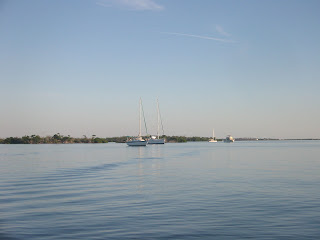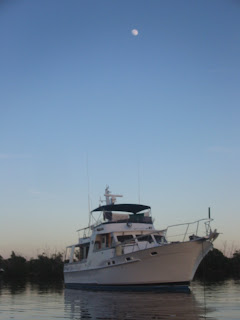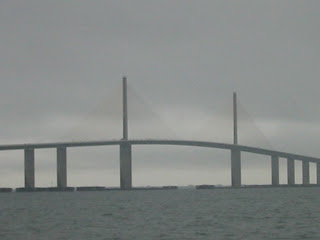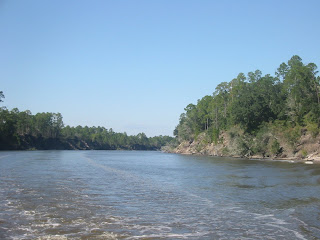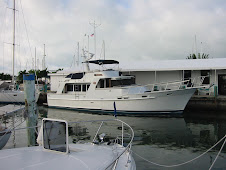We waited for a good weather window to do our crossing past the curve of the Florida Panhandle called the “Big Bend.” This open water Gulf crossing shortens the distance by about 75 miles, making a straight line from either Apalachicola or Carrabelle on the Panhandle, to the southern cities of Tarpon Springs, Clearwater or Tampa.
The distance of 185 miles is too much to be made in daylight hours this time of year. So, many boaters depart in the afternoon, go throughout the night, and arrive in the morning of the following day. It is important to transit the coastal area at the beginning and end of the journey in daylight, as the crabbers have their crab traps scattered at random in 30 feet of water or less on each coast. These traps have lines that can become entangled in propellers and shafts, causing big problems for boaters!

So, with favorable, moderate seas predicted for the night of November 23, Monarch and nine other boats decided to make the crossing. We got a taste of night navigational lighting the evening before our departure, as Buddy’s Boys shrimp boat went out for an overnight run – all lit up.

And as we departed at 12:30 p.m. on November 23, we felt it was a good luck sign to see the Miss Martha, a shrimper offloading her catch.

Apalachicola Bay was calm, wide and shallow, but well buoyed, and we had other good luck signs of loons and dolphins playing in our wake. We were ready for the big crossing.

The Government Cut pass into the Gulf was well marked and easily navigated.

St. George Island is the barrier island that separates Apalachicola Bay from the Gulf. It is heavily built up with homes, much more so than Apalachicola.

As the sun set, the clouds came in, and the winds were at direct opposition to the 3-4 foot seas. The ride was lumpy and bumpy, and the pitch-black night fell. We were glad for our GPS, our computer charts and navigation, and our old-fashioned back up paper charts and 30-minute dead reckoning fixes. And we could see the navigation lights of our fellow boaters headed the same way, and talk to them on the radio. The two of us on Monarch took turns standing watch and trying to catch a quick nap.

The dawn came at 0700 hours, with a large pot of coffee, a bit of fog, and lots of crab traps! We transited the Clearwater Pass, and were tied up at the Clearwater Yacht Club docks by 0840 hours. After hosing the salt water off the boat, we headed to bed for a four-hour nap!

We did a few boat chores and had a prime rib dinner at the Yacht Club. It was an early to bed night, and we’ll be ready to resume our GICW cruise in the morning.
 This morning dawned clear and calm, a beautiful powerboat day! We departed the skinny entrance of Pelican Pass and made our way to the Gulf, for an offshore run.
This morning dawned clear and calm, a beautiful powerboat day! We departed the skinny entrance of Pelican Pass and made our way to the Gulf, for an offshore run. The adjacent Boca Grande Pass is well marked by the Boca Grande Lighthouse, which we had toured two years ago. This pass is the entrance to Port Charlotte and Charlotte Harbor.
The adjacent Boca Grande Pass is well marked by the Boca Grande Lighthouse, which we had toured two years ago. This pass is the entrance to Port Charlotte and Charlotte Harbor. We headed directly for Marco Island. We had hoped to spend a couple nights at anchor along the way, but a water pump on the port engine started a slow drip. We called the marina on Marco, who said come right in for a fix! So, we had a couple unexpected mechanical lay days.
We headed directly for Marco Island. We had hoped to spend a couple nights at anchor along the way, but a water pump on the port engine started a slow drip. We called the marina on Marco, who said come right in for a fix! So, we had a couple unexpected mechanical lay days.










